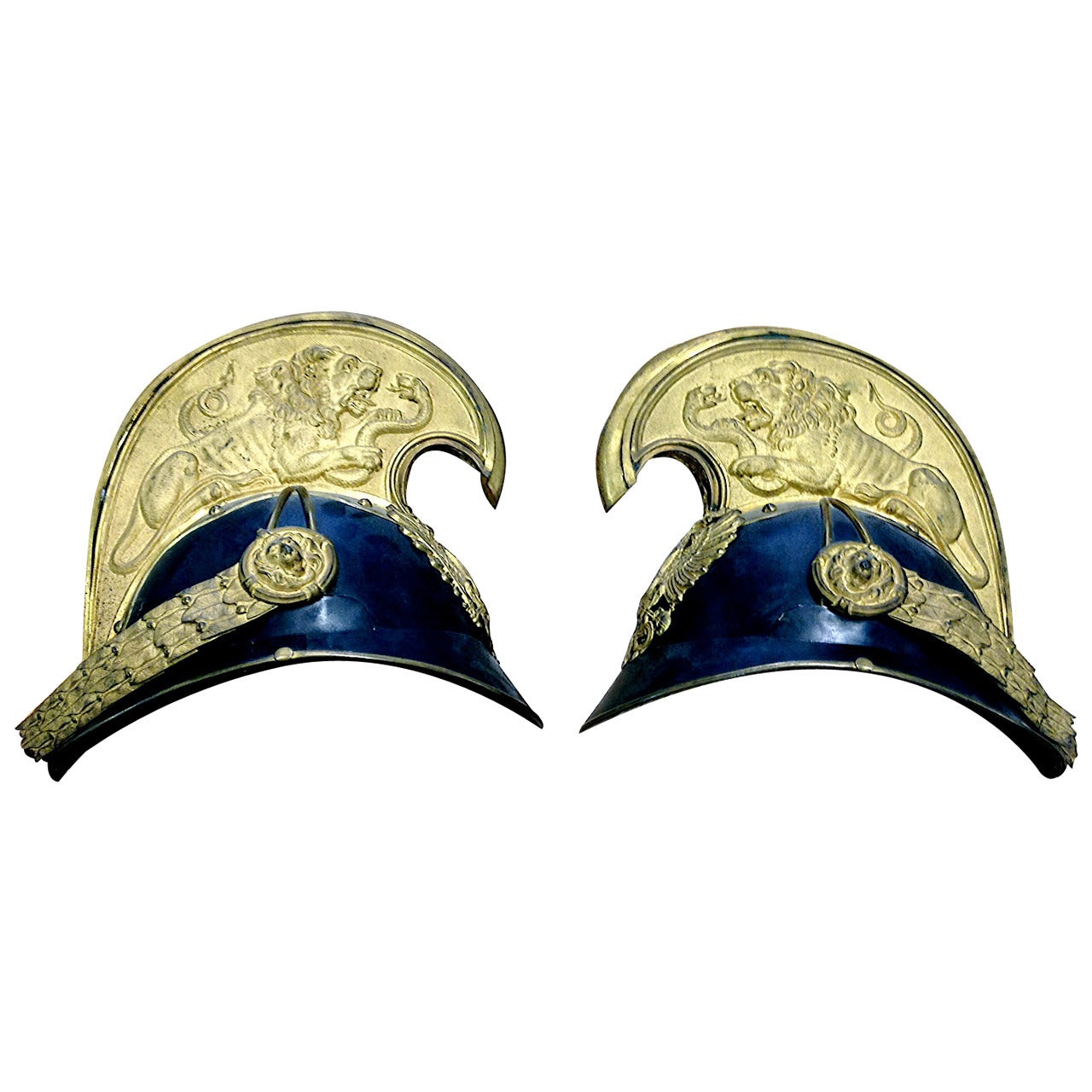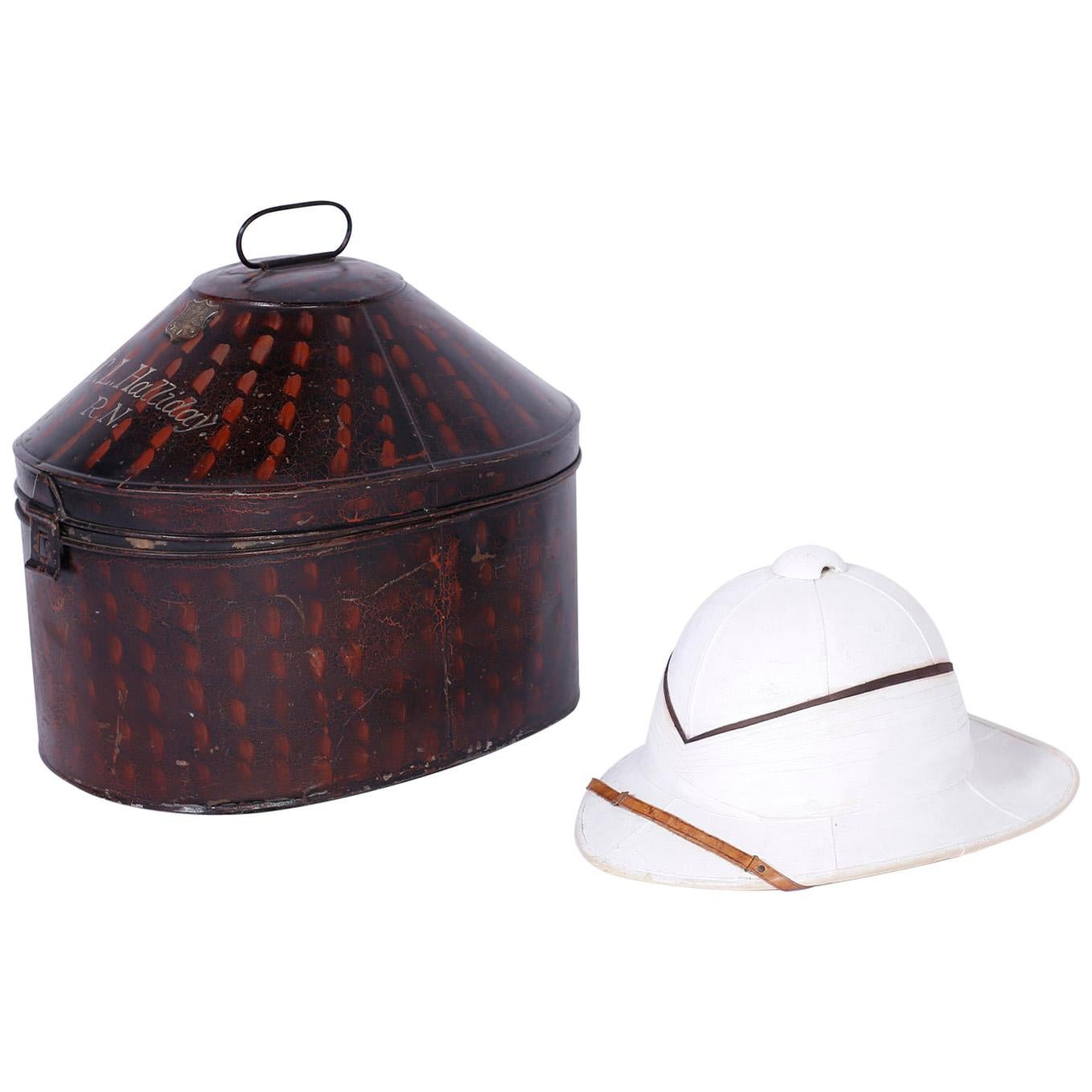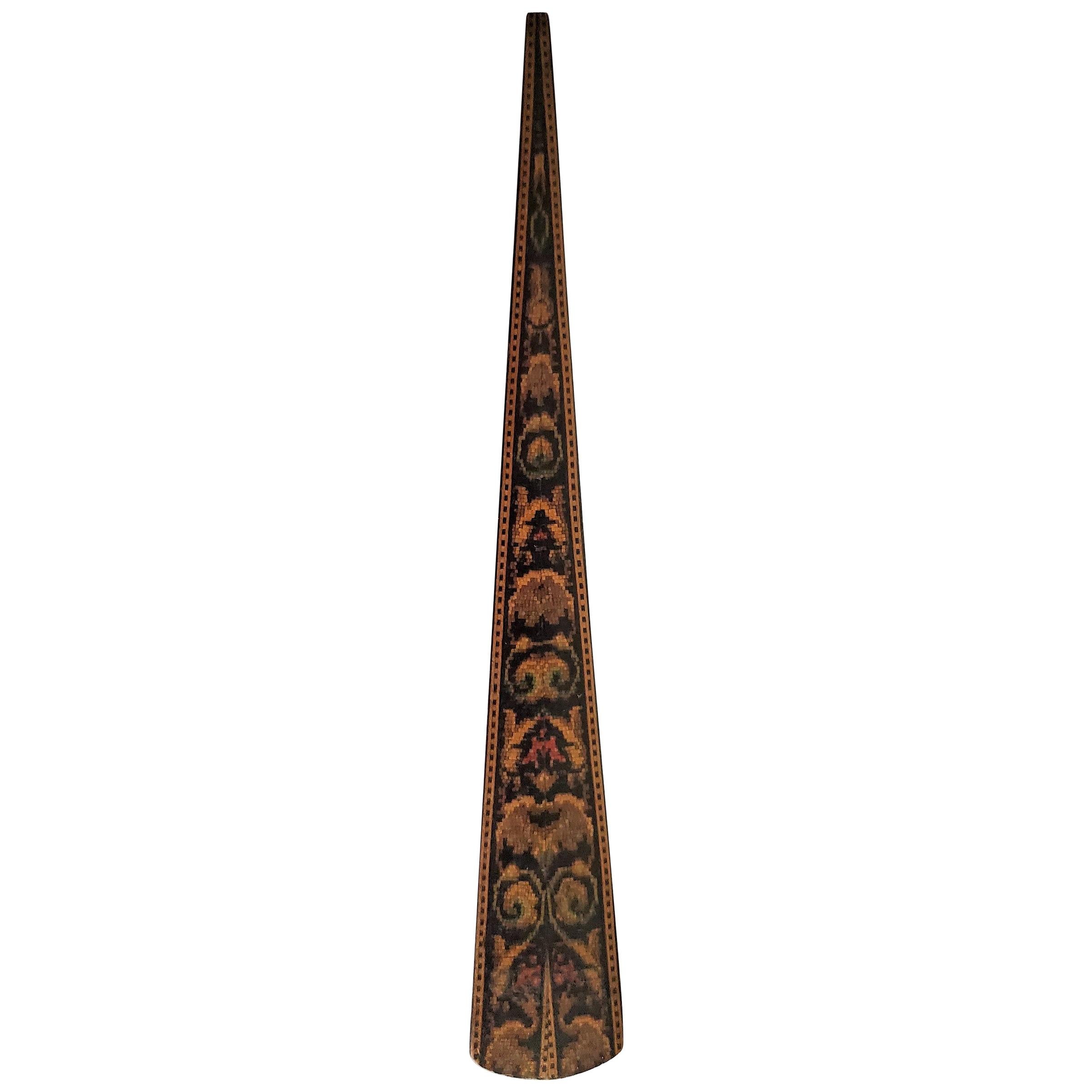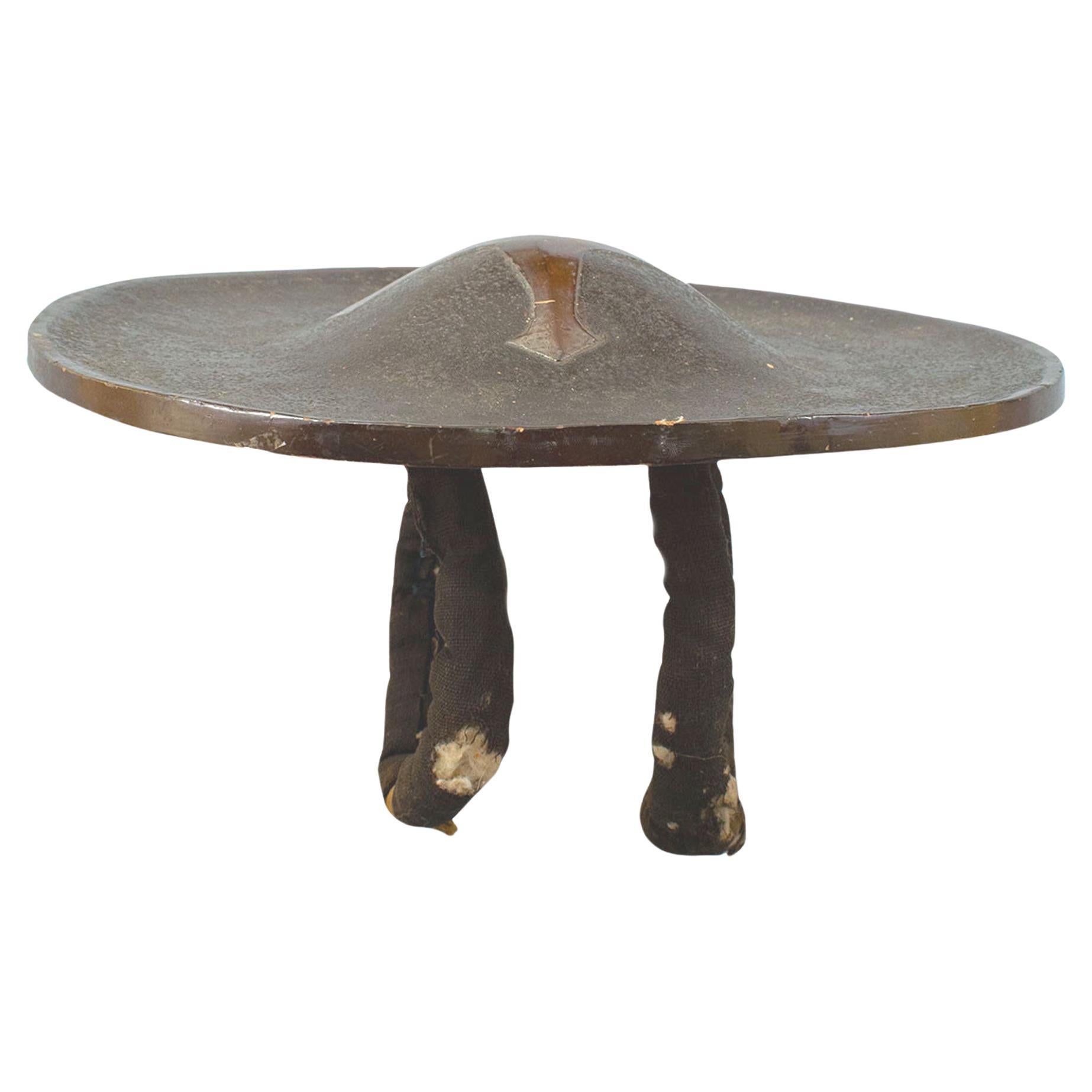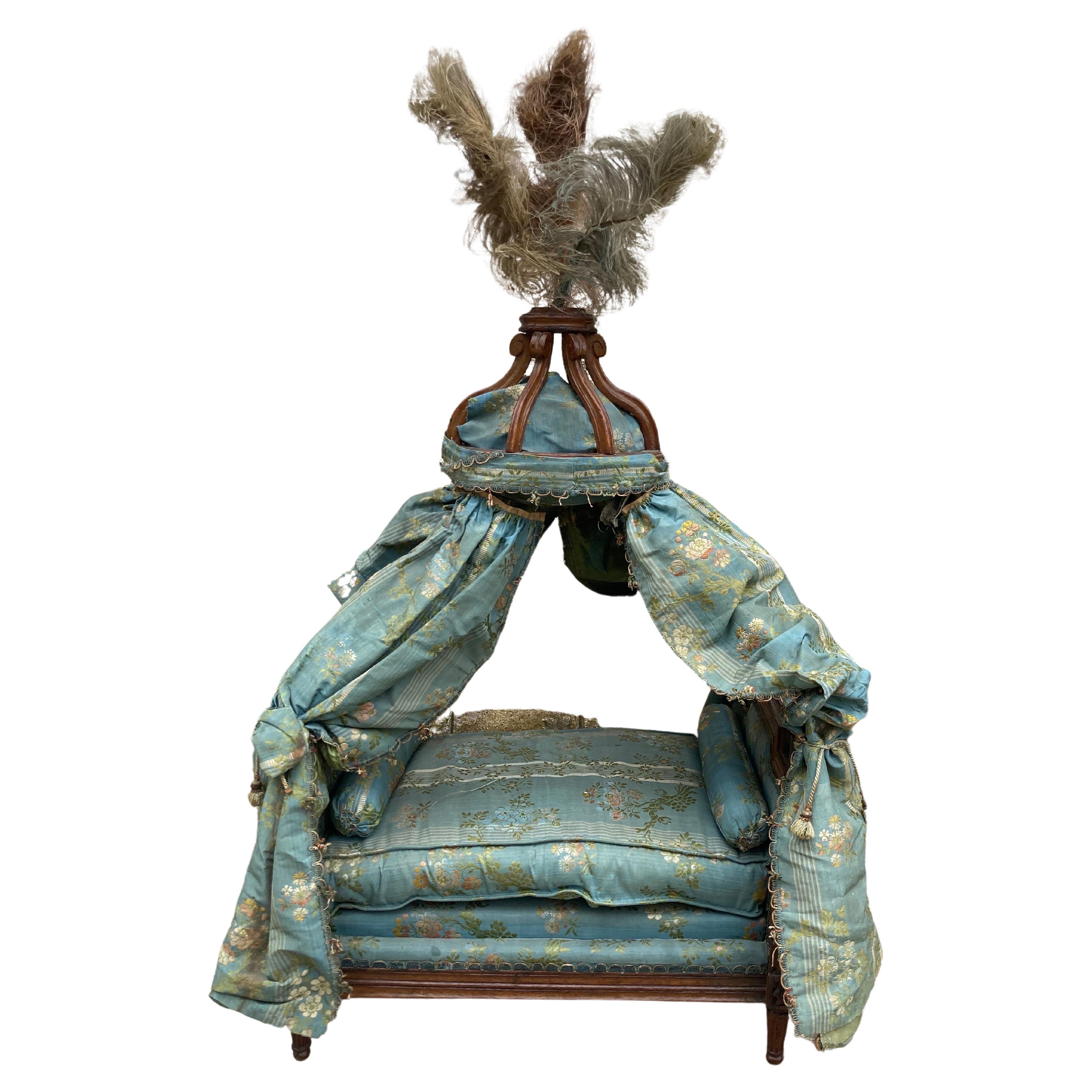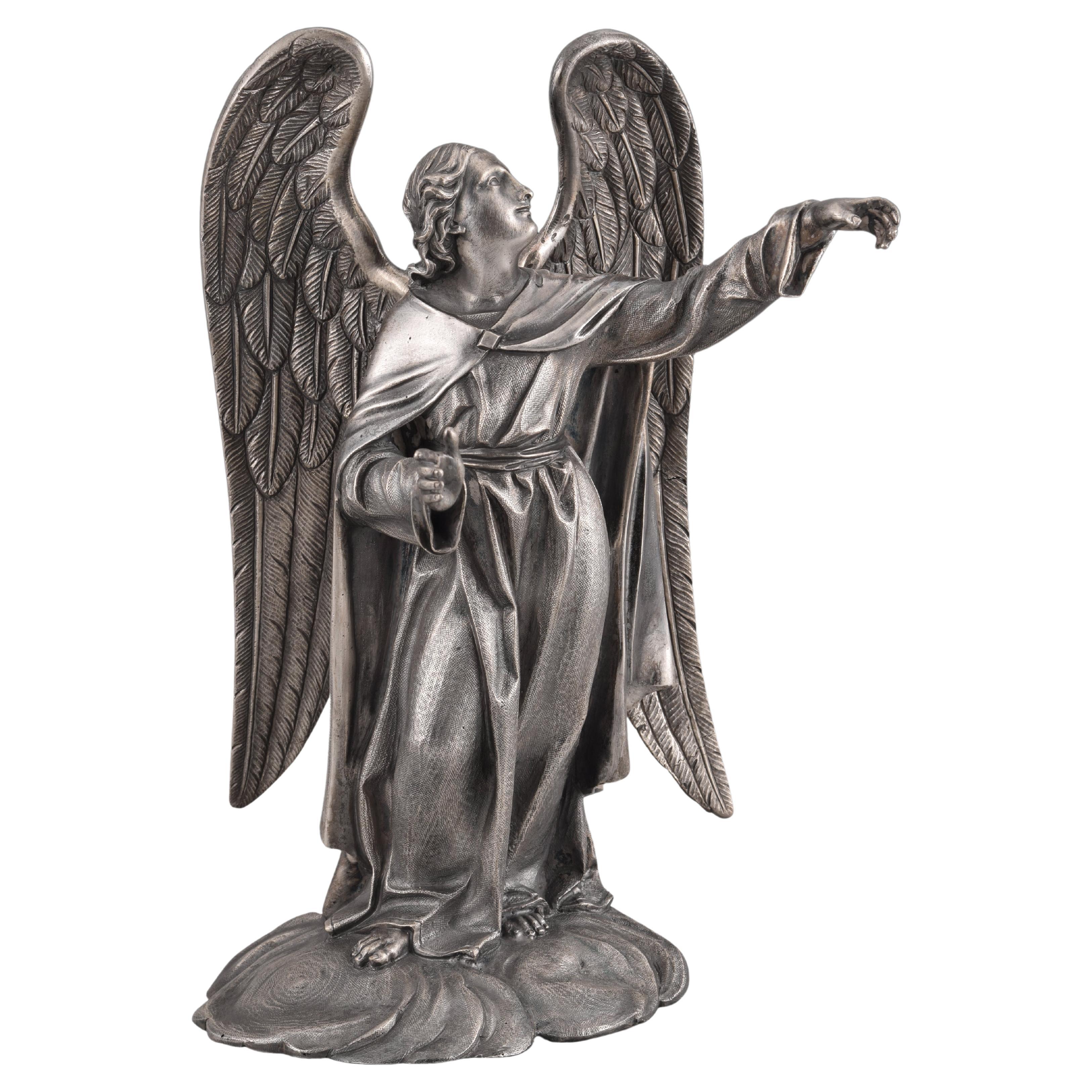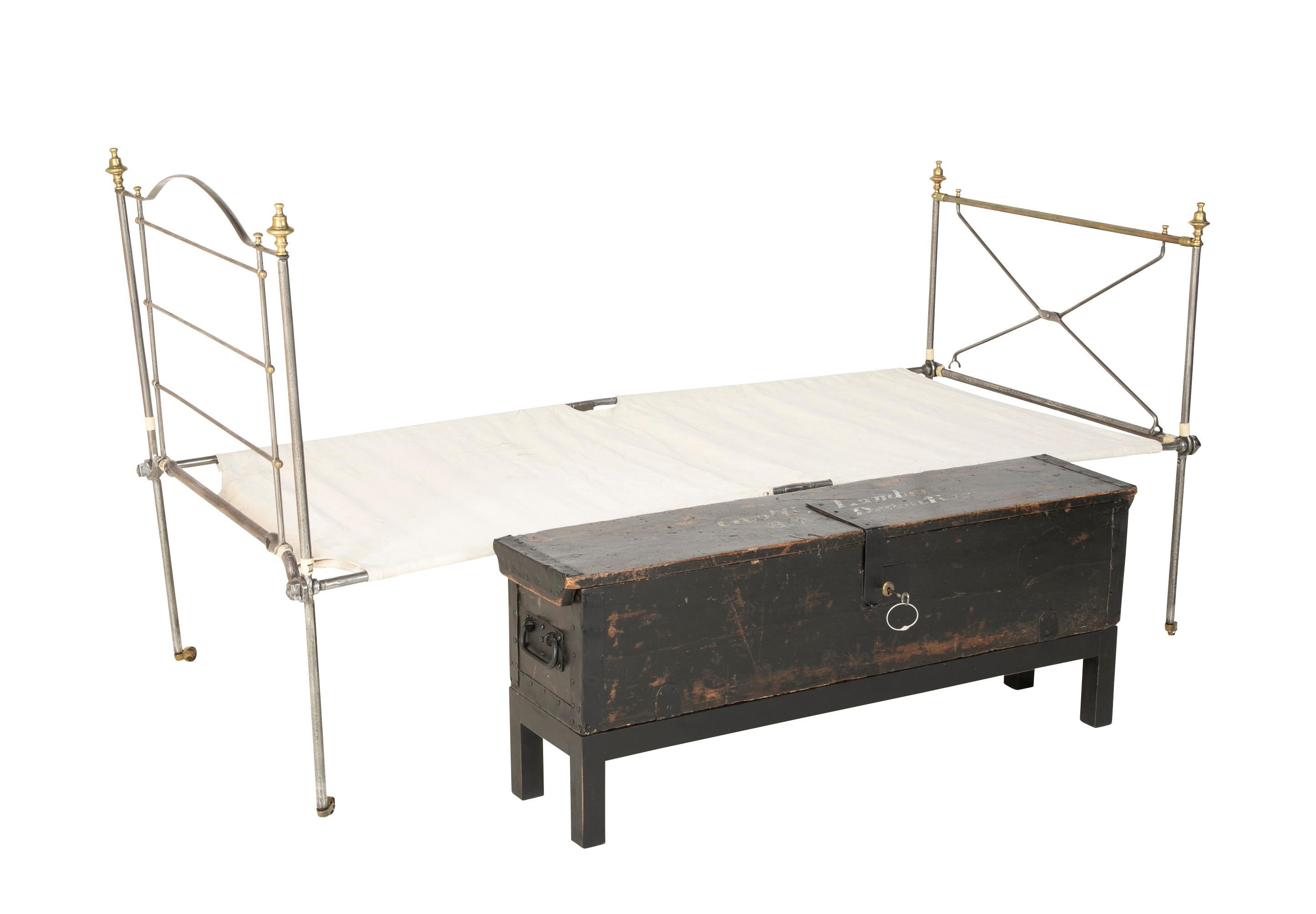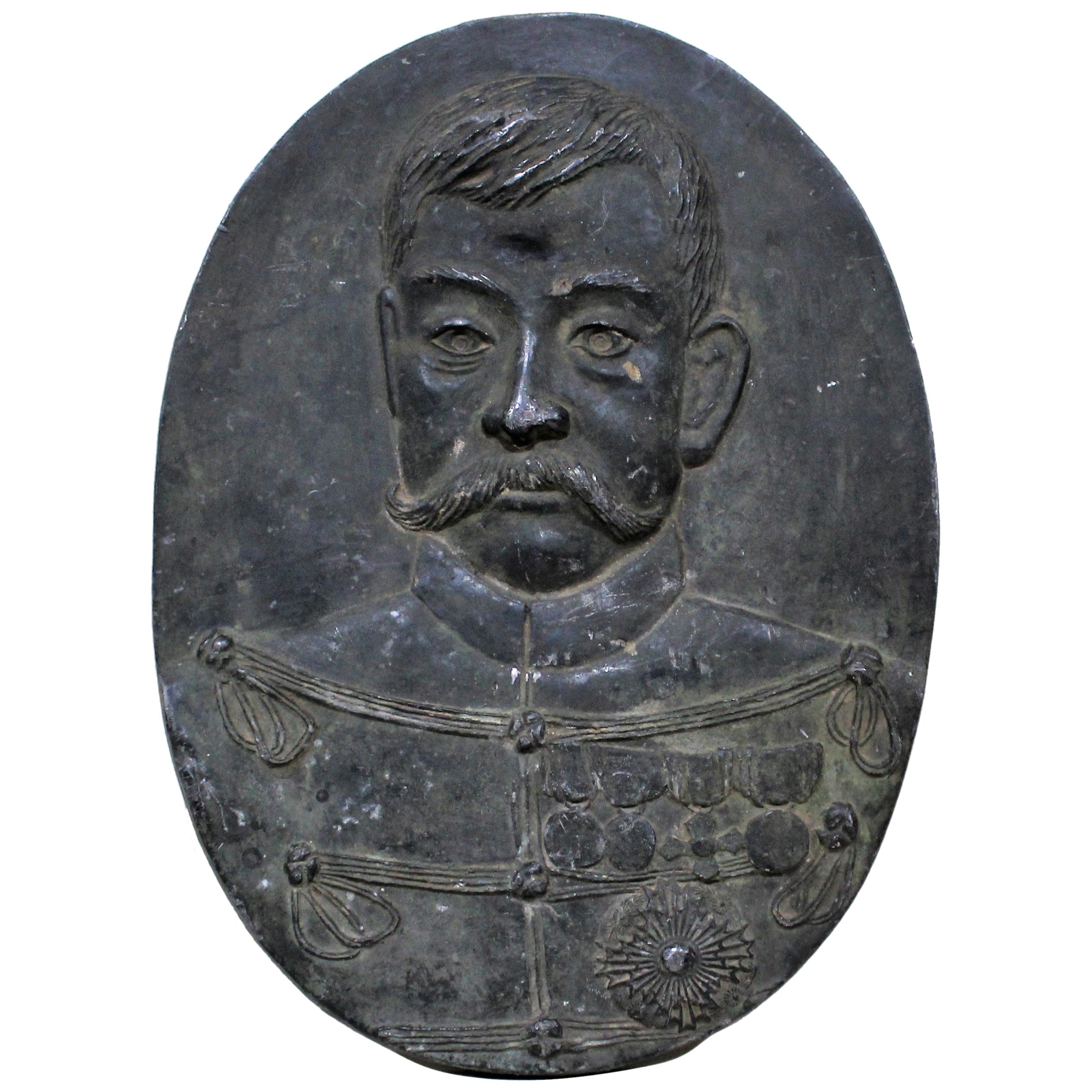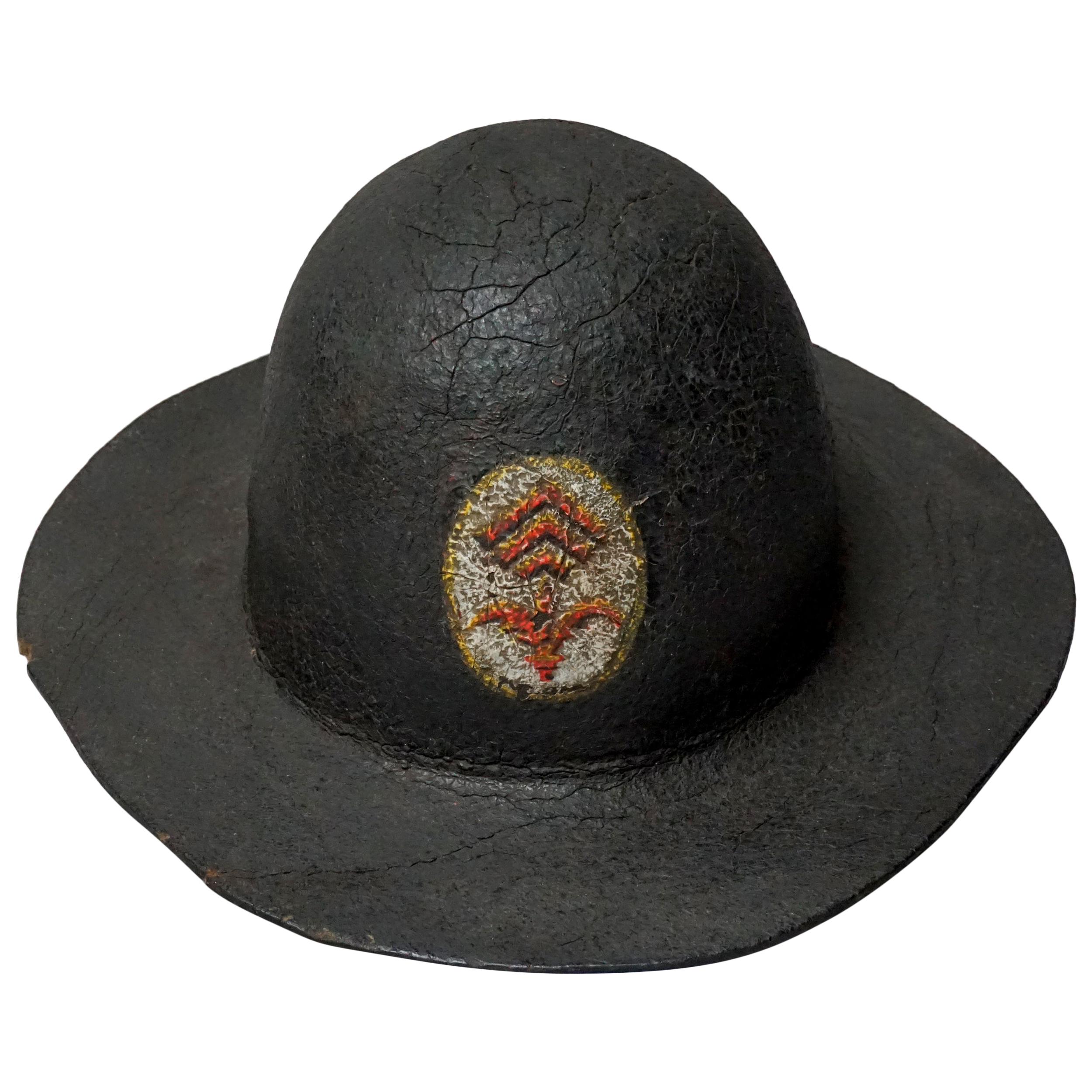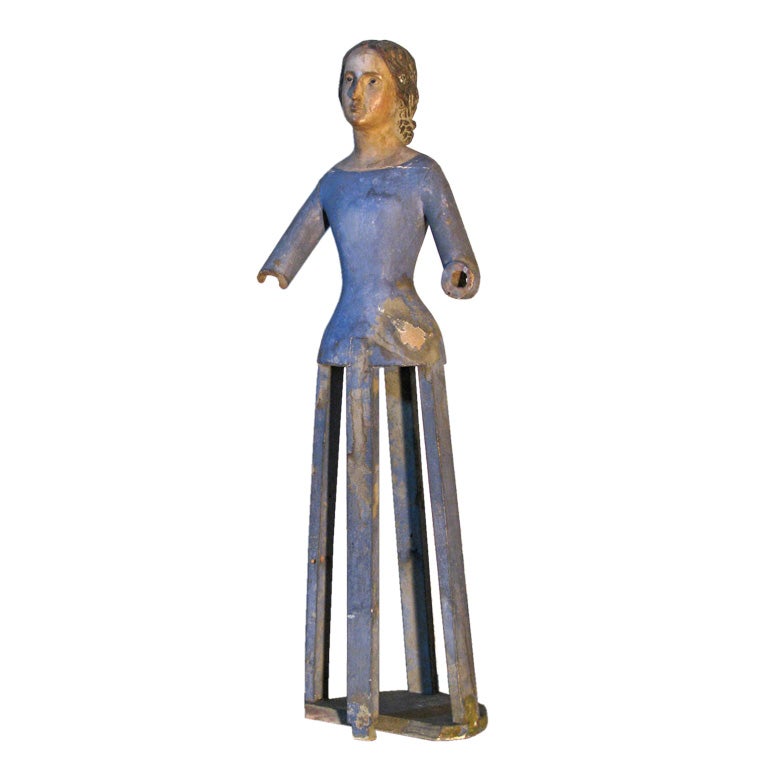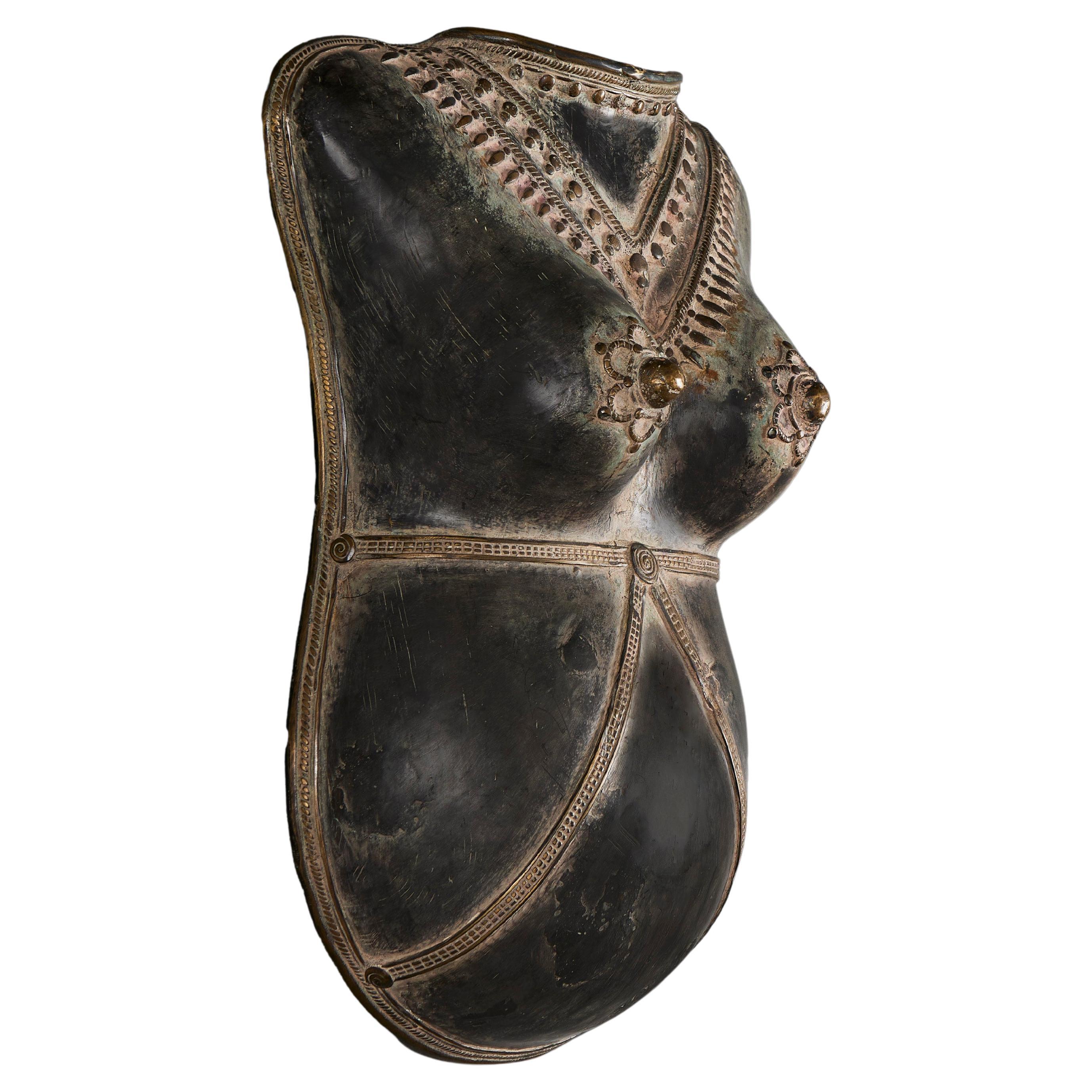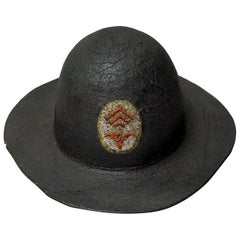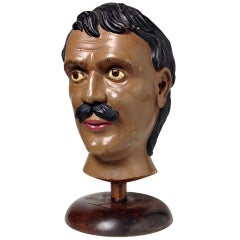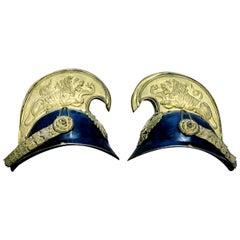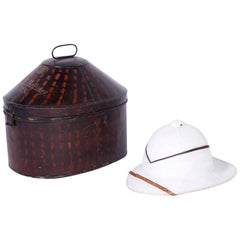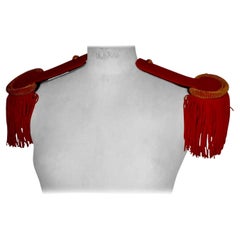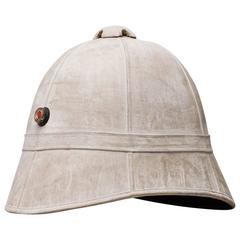
Rare 19th century Pith or Tropical Officers Helmet
View Similar Items
Want more images or videos?
Request additional images or videos from the seller
1 of 11
Rare 19th century Pith or Tropical Officers Helmet
About the Item
- Dimensions:Height: 8.67 in (22 cm)Width: 8.67 in (22 cm)Depth: 11.82 in (30 cm)
- Materials and Techniques:
- Place of Origin:
- Period:
- Date of Manufacture:Unknown
- Condition:Wear consistent with age and use. Minor fading.
- Seller Location:Haarlem, NL
- Reference Number:1stDibs: LU104043153612
About the Seller
4.9
Platinum Seller
These expertly vetted sellers are 1stDibs' most experienced sellers and are rated highest by our customers.
1stDibs seller since 2014
328 sales on 1stDibs
Typical response time: 2 hours
More From This SellerView All
- 19th Century Black Painted Leather French Primitive Fire Helmet Casque PompierLocated in Haarlem, NL19th century black painted leather French fire helmet with painted logo with what looks like a 'French Lily' and three hooked lines Made out of one...Category
Antique Mid-19th Century French Historical Memorabilia
MaterialsLeather
- 19th Century Odd Fellows or Oddfellows Tin Heart in Hand on Oak Stick or StafLocated in Haarlem, NLEarly 19th Century Odd Fellows or Oddfellows tin heart in hand on an oak stick or staf. The basic idea behind the hand with heart is that whenever an Od...Category
Antique 19th Century British Georgian Historical Memorabilia
MaterialsTin
- 19th Century Wooden Carnival, Fair or Advertisement Head of the Strongest ManLocated in Haarlem, NLThis is a very cool guy, it's a wooden head of a 19th century 'the Strongest Man of the World' attraction on a carnival or fair. The brown color, or maybe the shape of his head, mak...Category
Antique 19th Century Unknown Sculptures
MaterialsWood
- 19th Century French Paper Mâché Mussel or Clam Anatomy Model by Louis AuzouxBy Dr. Louis AuzouxLocated in Haarlem, NLThis papier mâché or papier-mâché model on wood of a clam is made in France by the Dr. Louis Auzoux workshop. The people from Dr. Auzoux's workshop in Paris were the best and most f...Category
Antique 19th Century French Collectibles and Curiosities
MaterialsWood, Paper
- Set of Ten 19th Century English Victorian Brass Chimney Good Luck Shoes or BootsLocated in Haarlem, NLFour sets and two single pieces of English Victorian brass chimney ornaments or "good luck" shoes. What a lovely collection of shiny shoes don't you think? Let me tell you a little bit about them, during the Victorian period in England, it was fashionable to have a pair of "good luck" brass shoes on your mantel (fireplace), they would been given to you as a wedding gift. Two sets were definitely match stick holders...Category
Antique Mid-19th Century British Victorian Models and Miniatures
MaterialsBrass
- 19th Century Carnival Folk Art Carved Wooden Head with Zinc HatLocated in Haarlem, NLThis head is from a fair or carnival game. Not sure what the game was, perhaps the head has been used to toss rings over, or maybe you were supposed to throw something in his mouth....Category
Antique Late 19th Century Unknown Carnival Art
MaterialsZinc
You May Also Like
- 19th Century Austrian HelmetLocated in Buchanan, MIHandsome 19th century Austrian helmet. Helmet has been separated into two parts so they can be flush mounted to a wall.Category
Antique 19th Century European Arms, Armor and Weapons
MaterialsMetal
$1,800 / set - Pith Helmet in the Original Tole BoxLocated in Palm Beach, FLEnglish pith helmet and painted copper box with all the historical romance you could wish for. Originally purchased from Gieves and Hawkes London by F.C.L....Category
Early 20th Century English Edwardian Historical Memorabilia
MaterialsMetal
$2,850 / set - 19th Century French First Officer’s Uniform Red EpaulettesLocated in Chillerton, Isle of Wight19th Century French First Officer’s Uniform Red Epaulettes Good pair of French Officers Epaulettes made in Red Silk and lined in black velvet, the f...Category
Antique Late 19th Century Federal Historical Memorabilia
MaterialsWool
- Rare 19th Century English Tunbridgeware Hair Pin or SlideLocated in Dallas, TXPresenting an absolutely gorgeous and extremely unique and rare 19th century British Tunbridgeware hair pin/bobbin or slide. This slide is unlike any of it’s kind we have seen before…. it is a very rare survivor ! From circa 1860–1880. Made of walnut with gorgeous marquetry inlay on the entirety of the front with classic Tunbridgeware micro-mosaic all over the front. The rear is walnut. The marquetry inlay appears to be various different woods, namely, maple, walnut and satinwood. Would have been worn in a Lady’s hair bun with the micro-mosaic facing forward. This would have belonged to a very elegant lady in the mid to late 19th century. Tunbridge ware is a form of decoratively inlaid woodwork, typically in the form of boxes, that is characteristic of Tonbridge and the spa town of Royal Tunbridge Wells in Kent in the 18th and 19th centuries. The decoration typically consists of a mosaic of many very small pieces of different coloured woods that form a pictorial vignette. Shaped rods and slivers of wood were first carefully glued together, then cut into many thin slices of identical pictorial veneer with a fine saw. Elaborately striped and feathered bandings for framing were pre-formed in a similar fashion. There is a collection of Tunbridge ware in the Tunbridge Wells Museum and Art Gallery in Tunbridge Wells. The famous makers of Tunbridge ware were in the Tunbridge Wells area of Kent; their most notable work was from circa 1830-1900. Early makers of Tunbridge ware, in Tunbridge Wells in the mid-18th century, were the Burrows family, and Fenner and Co. In the 19th century, around 1830, James Burrows invented a technique of creating mosaics from wooden tesserae. Henry Hollamby, apprenticed to the Burrows family, set up on his own in 1842 and became an important manufacturer of Tunbridge ware, employing about 40 people. Edmund Nye (1797–1863) and his father took over the Fenner company when William Fenner retired in 1840, after 30 years in partnership with him. Thomas Barton (1819–1903), previously apprenticed at the Wise factory, joined the Nyes in 1836, and worked as Nye’s designer; he took over the business in 1863 and continued there until his death. In Tonbridge (near to Tunbridge Wells), George Wise (1703–1779) is known to have had a business in 1746. It continued with his son Thomas, and Thomas’s nephew George (1779–1869), who took over in 1806. In its early years the company made articles such as workboxes and tea caddies with prints of popular views; later items had pictures created from mosaics. Their workshop in Tonbridge, Wise’s Tunbridge Ware Manufactory, was next to the Big Bridge over the Medway; the building was demolished in 1886 to widen the approach to the bridge. Tunbridge ware became popular with visitors to the spa town of Tunbridge Wells, who bought them as souvenirs and gifts. Articles included cribbage boards, paperweights, writing slopes, snuffboxes and glove boxes. At the Great Exhibition of 1851, Tunbridge ware by Edmund Nye, Robert Russell and Henry Hollamby was shown; Edmund Nye received a commendation from the judges for his work. He exhibited a table depicting a mosaic of a ship at sea; 110,800 tesserae were used in making the picture. The manufacturers of Tunbridge ware were cottage industries, and they were no more than nine in Tunbridge Wells and one in Tonbridge. The number declined in the 1880s; competent craftsmen were hard to find, and public tastes changed. After the death of Thomas Barton in 1903 the only surviving firm was Boyce, Brown and Kemp, which closed in 1927. Marquetry was an old technique which was continued by Nye and Barton to create images such as birds or butterflies. ‘Green Oak’ as caused by the fungus Chlorociboria aeruginascens. Stickware and half-square mosaic was invented by James Burrows in about 1830: a bunch of wooden sticks of different colours, each having triangular or diamond-shaped cross section, were tightly glued together; in the case of stickware, the resulting block was dried, then turned to form an article such as the base of a pincushion. For half-square mosaic, thin slices were taken from the composite block, and applied to a surface.[1][2][4] Tesselated mosaic, was a development by James Burrows of half-square mosaic; it was adopted by George Wise and Edmund Nye. Minute tesserae were used to form a wide variety of geometric and pictorial designs. Many sorts of wood were used for the various colours; about 40 were in regular use. Only natural colors were used; green was provided by “green oak”, produced by the action of fungus on fallen oak. Designs for articles were often taken from designs of Berlin wool work.Category
Antique Late 19th Century English High Victorian Collectible Jewelry
MaterialsSatinwood, Walnut
- JINGASA - ICHIMON-GASA EDO Period 19th Century Samurai Helmet JapanLocated in TEYJAT, FRJINGASA - ICHIMON-GASA EDO Period 19th Century Jingasa, flat-shaped Samurai headdress made of wood, the exterior covered with black lacquer depicting a brown kamon, a Japanese heral...Category
Antique Mid-19th Century Japanese Edo Arms, Armor and Weapons
MaterialsLeather, Textile, Wood
$394 Sale Price20% Off - Late 19th Century British Officer's Campaign Bed with Original Storage ChestLocated in Stamford, CTLate 19th century British Army officer's painted pine campaign chest containing original steel & brass campaign bed. Stand is modern as is bed canva...Category
Antique Late 19th Century English Campaign Daybeds
MaterialsSteel
Recently Viewed
View AllMore Ways To Browse
Used Army Helmets
Army Helmet
Pith Helmet
Antique Pith Helmet
American Colonial Period
Antique Post Office Collectibles
U S Furniture Industries
Used Wooden Arrows
Antique Wooden Train
Benjamin Franklin
Antique Furniture Nj
Antique Scrap
George Coronation
Antique Grinders
Antique Grinder
Antique War Swords
Wwii Antiques
Train Memorabilia
